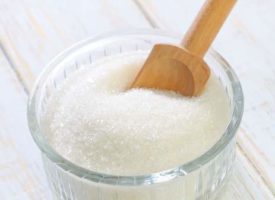At the last tally, nearly 26 million children and adults in the United States have diabetes. With nearly 2 million new cases being diagnosed each year, I can’t stress enough the importance of keeping your blood sugar level under control using natural methods such as weight loss, diet, exercise, and targeted nutrients.
Sadly, diabetes is often accompanied by other troublesome complications, and among the most significant are wounds that heal slowly—or not at all. Diabetic ulcers are the leading cause of non-traumatic lower-limb amputations. The good news is, losing your limbs isn’t inevitable. You can treat these wounds—often from the comfort of your own home.
A Sweet Solution for Diabetic Ulcers
I want to share the all-natural wound-healing protocol we’ve been successfully using at WhitakerWellness for 25 years. It seems counterintuitive, but sugar (or honey, which works in the same way) is far more effective at controlling local infection than any antibiotic. As it dissolves in the fluid produced by a wound, it creates an osmotic environment that kills all bacteria—like a goldfish in the Great Salt Lake, no bacteria can survive in a wound filled with sugar. It also encourages natural debridement and stimulates tissue repair.
To dress open wounds with sugar or honey, coat a strip of gauze with Vaseline and place it around the sore. Pour ¼-inch of sugar or honey over the wound, cover with sterile gauze, and secure with a cling bandage. Every two days, remove bandage, clean, and repeat.
Note: Do not use sugar dressings on bleeding wounds, as sugar promotes bleeding.
More Help for Diabetic Complications
At the Whitaker Wellness Institute, we use several innovative therapies to treat diabetic complications. To learn more, please read this article.


